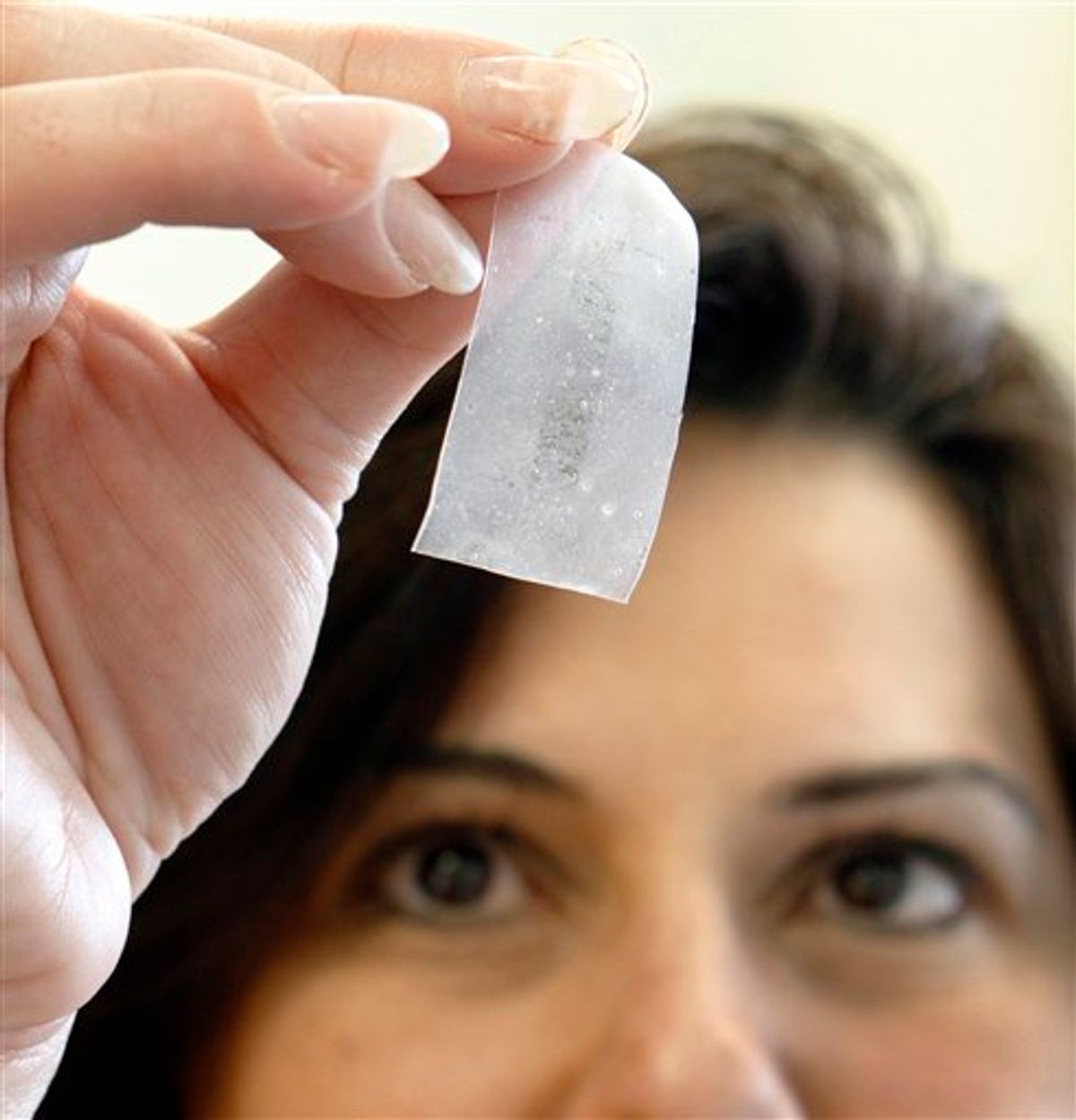Try after try to make vaginal creams that could repel the AIDS virus have failed. Now researchers are testing if a drug used to treat HIV infection finally might give women a tool to prevent it -- by infusing the medicine into vaginal gels and contraceptive-style rings.
Even quick-dissolving anti-HIV films are being created, the same style now used for breath-fresheners or allergy medicines but made for fingertip application in the vagina.
Called microbicides, this kind of woman-controlled protection is considered key to battling the HIV epidemic -- especially in developing countries where the virus is at its worst and women too often can't get their partners to use a condom.
For two decades, scientists tried less powerful medications in disappointing microbicide attempts. Results from the first study to see if this new strategy works -- South African women tested a gel made of the AIDS drug tenofovir -- aren't due until July.
But researchers gathering for the biennial International Microbicides Conference in Pittsburgh next weekend express cautious optimism.
"Frankly, blocking transmission of the virus appears to be a lot harder than anyone understood it would be at the beginning," says meeting co-chair Dr. Sharon Hillier of the University of Pittsburgh and a principal investigator of the Microbicide Trials Network.
"The reason we're not depressed in the microbicide world? We actually have learned a lot and moved on to think about potent drugs and really cool delivery methods."
Antiretroviral drugs have revolutionized AIDS care, helping people live far longer with the virus. They've also successfully lowered the risk that an infected pregnant woman passes HIV to her child. So it was logical for scientists to begin testing whether swallowing an antiretroviral drug every day could protect the still healthy, both men and women, from getting infected. More than half a dozen studies of this so-called pre-exposure prophylaxis are under way among high-risk populations around the world, largely using the drug tenofovir because it tends to cause fewer side effects than many other AIDS drugs.
Even if that eventually proves protective, taking daily pills has drawbacks -- systemic side effects, the risk of drug resistance, what happens if people miss a dose or share tablets with an already infected relative -- that make the approach controversial.
Hence the need for topical protection, too. Women already make up half of the more than 33 million people worldwide living with HIV, and most of the new infections in hardest-hit sub-Saharan Africa are among young women.
"I have in fact so little to offer them in terms of HIV prevention that I sort of tear my hair out," says Dr. Salim Abdool Karim of the Centre for the AIDS Program of Research in South Africa at the University of KwaZulu-Natal.
He led the pending tenofovir gel study, his ninth microbicide study since 1994. "It must take a certain level of perseverance to want to stay in this field."
In those years, scientists discovered that cells on the vaginal surface aren't big targets of HIV, yet the virus somehow fairly quickly penetrates to a much more susceptible second layer. Monkey studies show a small population of "founder" cells apparently reproduce in that spot for a few days before the virus is ready to spread, Hillier says. Drugs like tenofovir block HIV's replication in the already infected, suggesting they're a good try for that window period, she explains.
And tenofovir concentrates in vaginal tissue at far higher levels via a gel than a pill -- with little spread of the drug elsewhere, easing side-effect concerns, adds Karim.
His study recruited 900 HIV-negative heterosexual women to test whether tenofovir gel, applied up to 12 hours before intercourse and again within 12 hours afterward, lowered the risk of infection.
While awaiting his results in July, the U.S. National Institutes of Health is funding the next step: Researchers now are recruiting up to 5,000 healthy women in several African countries to use either vaginal tenofovir gel -- daily rather than timed around intercourse -- or daily pills containing the drug. It's the first comparison of the two strategies.
Taking a lesson from contraception -- that more choices equal more usage -- researchers are developing other potential tenofovir methods, too: A quick-dissolve tenofovir vaginal film, with less mess to be completely invisible to the partner. Vaginal rings that could ooze tenofovir into the vagina over a month. And for gay men, a rectal tenofovir.
Health workers should be thinking now about the challenges should any of these attempts work, Dr. Regina Osih of the University of Witwatersrand will tell next week's microbicide meeting. Access is a big question in already overburdened regions -- as is how often users would need HIV testing to be sure the protection's working.
------
EDITOR's NOTE -- Lauran Neergaard covers health and medical issues for The Associated Press in Washington.

Shares